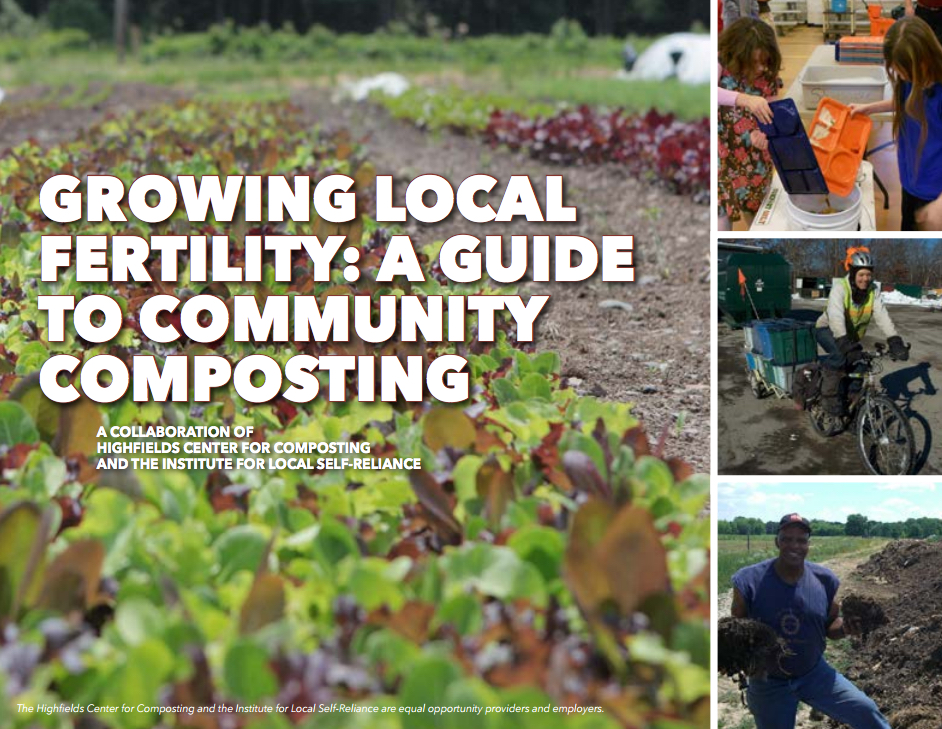Composting can take place at many levels – backyard, block, neighborhood, schoolyard, community, on-farm, and regional – and in urban, suburban, and rural areas. Composting at the local level circulates dollars in the community, promotes social inclusion and empowerment, greens neighborhoods, builds healthy soils, supports local food production and food security, embeds a culture of composting know-how in the community, sustains local jobs, and strengthens the skills of the local workforce. When materials are collected and transported out of the community for processing, few if any of these benefits are realized at the local level.
Community composting is thriving but needs support to grow further. ILSR's report, Growing Local Fertility: A Guide to Community Composting, describes successful initiatives, their benefits, tips for replication, key start-up steps, and the need for private, public, and nonprofit sector support. Produced in collaboration with the Highfields Center for Composting in Hardwick, Vermont, Growing Local Fertility profiles 31 model programs in 14 states and the District of Columbia. Programs range from urban to rural and include demonstration/training sites, schools, universities, pedal-powered collection systems, worker-owned cooperatives, community gardens, and farms employing multiple composting techniques. Many but not all are non-profit mission driven enterprises. Their distinguishing feature is keeping the process and product as local as possible while engaging the community through participation and education.
Authors: Brenda Platt, James McSweeney, and Jenn Davis

